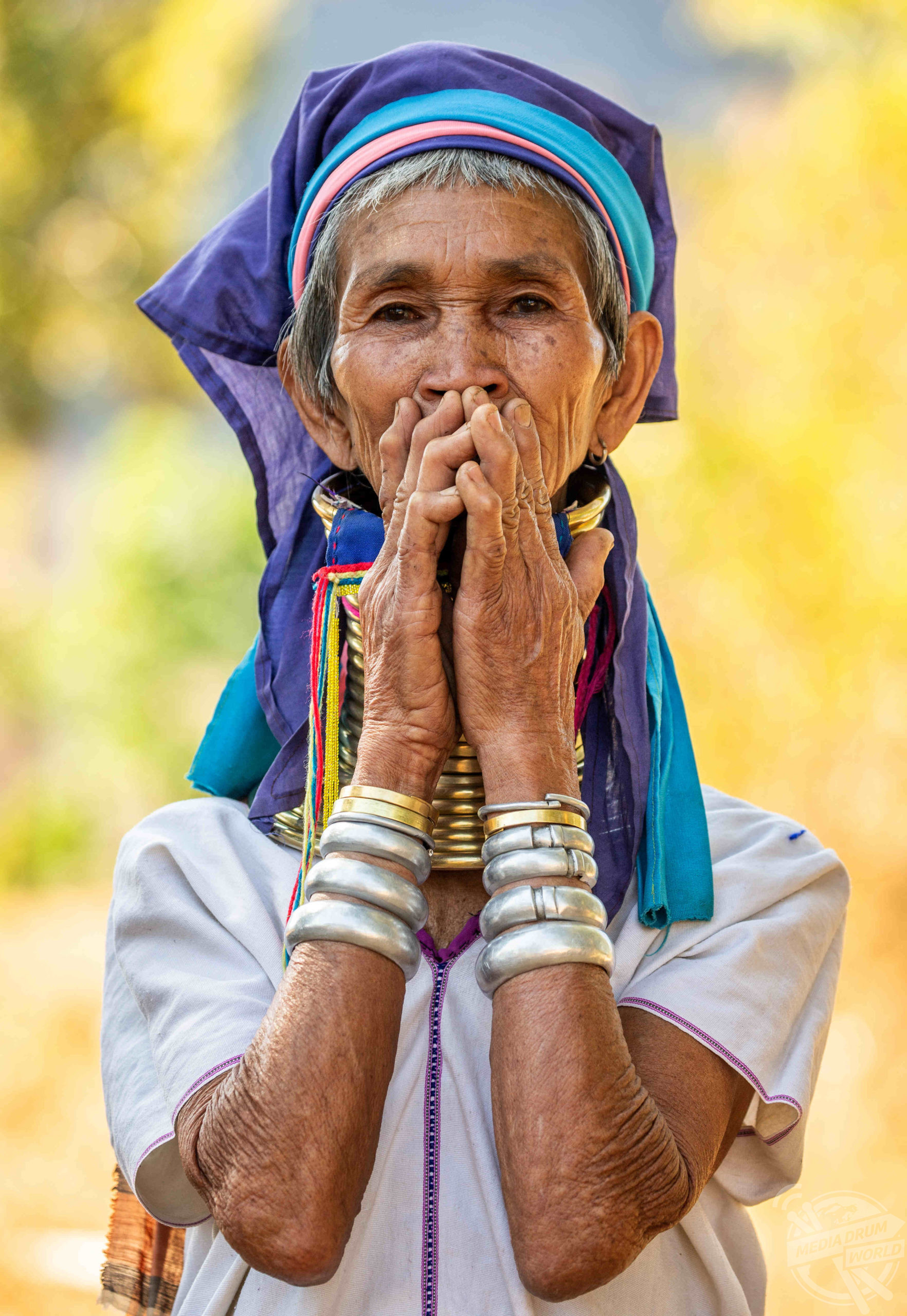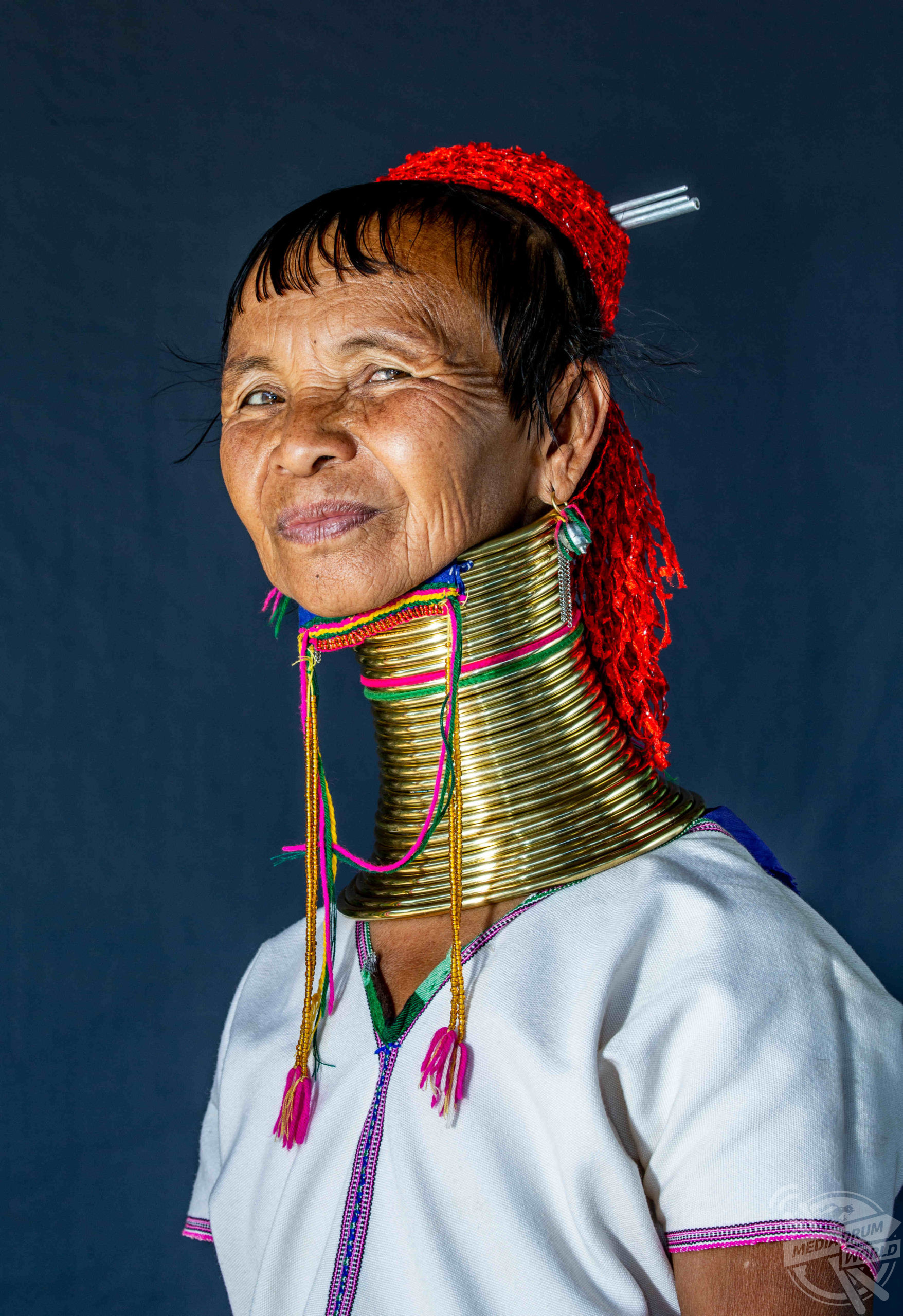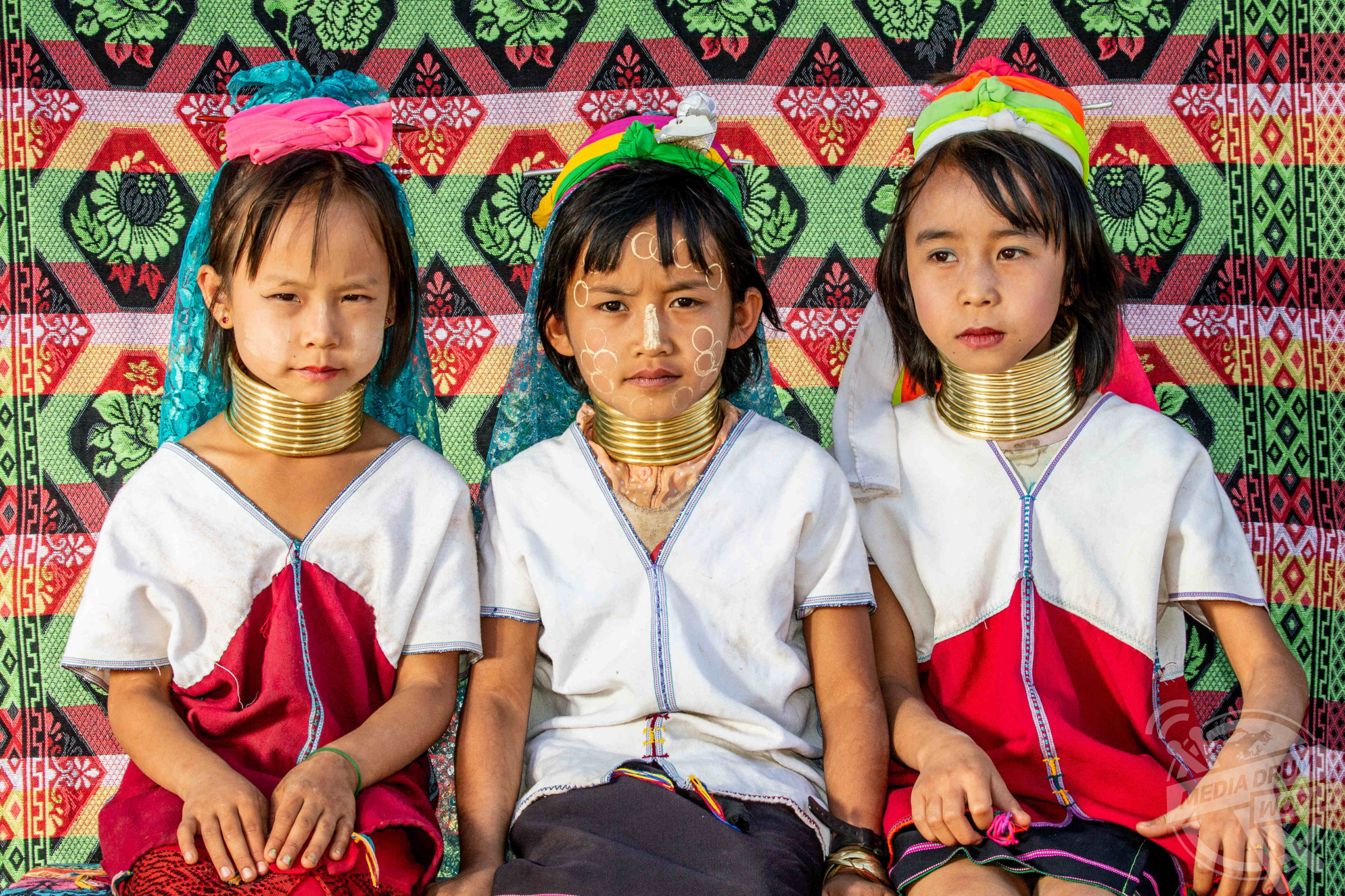By Alexander Greensmith
MEET THE women of the Kayan tribe who elongate their necks using nine-inch brass coils which they begin wearing at just five-years-old.
One striking photo showed an elderly woman with a neck measuring over seven inches in length as she proudly displayed her golden neck bands that can weigh as much as 13-pounds collectively and are made out of copper or bronze.
Another image captured three young girls keeping the tradition alive as they posed in traditional clothing.

The pictures were shot in Kayah, Myanmar, by professional photographer Andrey Gudkov (48) from Moscow, Russia. He spent five days with the Kayan tribe of Tibeto-Burman ethnic minority, shooting on his Canon EOS-1D X camera.
The exact reason for their metallic necklines remains unknown, but some anthropologists believe the rings made women less attractive to other tribes, so protected them from becoming slaves. The neck is not actually elongated from the accessories, but they actually push the collar bone down, compress the ribcage, and deform the clavicle.
“According to one local I spoke to, these rings on the neck are to protect from a tiger bite, but tigers have not been found in those places for a long time, and the men of this tribe do not have such rings,” said Andrey.

“According to another legend, the longer the neck and the more rings they have means a higher status in the village. This was evidenced when I noticed that older women have the longest necks, and are very respected.
“The first ring is worn by a girl at age five. Tradition dictates for each year before marriage, they put on a new ring. The women are meant to never remove them either.

“Unfortunately, the younger generations of women are only wearing the rings to attract tourists and then removing them, against the history of their ancestors. The neck-tradition has now been reduced to tourist paraphernalia for photography, but I was lucky as these elderly women I photographed were the real deal.”
There are 20,000 Kayans in Kayah state, and 60,000 in Myanmar overall, making just 0.006 per cent of the Southeast Asian nation. They practice a traditional Bronze Age religion called Kan Khwan, and believe their people are the result of a union between a male human/angel hybrid and a female dragon.






